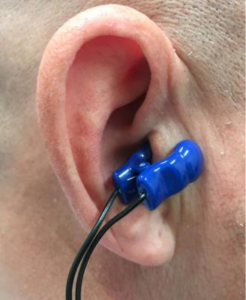
A trial evaluating Parasym’s neurostimulation technology shows that an ear-clip-like device can help reduce atrial fibrillation burden. The results were presented at the Heart Rhythm Society’s 40th Annual Scientific Sessions (HRS; 8–11 May) held in San Francisco, USA.
The TREAT AF trial is a sham-controlled, double-blind, randomised clinical trial designed to examine the effect of low-level transcutaneous electrical stimulation of the auricular branch of the vagus nerve at the tragus (LLTS) on AFib burden over a six-month period.
LLTS was delivered using an ear clip attached to either tragus (active; n=26) or the ear lobe (sham; n=27). The patients received individual training and used the device for one hour every day for six months.
AFib burden over two-week periods was assessed by noninvasive continuous ECG monitoring at baseline, three and six months and heart rate variability based on five minutes ECG readings and serum cytokines were measured at the respective time points. Baseline characteristics including age, gender and stroke risk were similar between the two groups.
Adherence to the stimulation protocol was 75% in the active arm and 83% in the sham arm. At six months, the median AFib burden was reduced by 85% in the active arm compared to the sham. After combining across the three- and six-month time points, the median AFib burden was reduced by 75% in the active arm compared to the sham arm.
“Our clinical trial introduces a novel self-administered, non-invasive therapy for patients newly diagnosed with atrial fibrillation. There are cases when drug therapy or surgery are not the optimal options, so this has the potential to serve as another approach for patients,” lead author Stavros Stavrakis, University of Oklahoma Health Sciences Center (Oklahoma City, USA), said in a release. “It was encouraging to see the significant reduction in AFib burden and that the device was well received in terms of adherence rate. This approach opens the door to a new way of thinking about AFib management and showcases that we can push boundaries to help advance patient care.”












